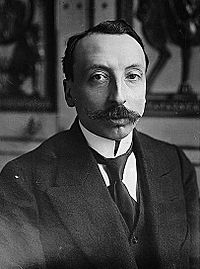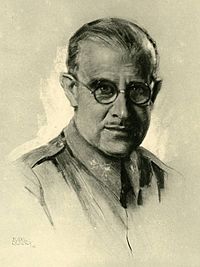Bérard-Jordana Agreement facts for kids
| Drafted | 5–23 February 1939 |
|---|---|
| Signed | 25 February 1939 |
| Location | Burgos, Francoist Spain |
| Effective | 27 February 1939 |
| Signatories | |
| Parties |
The Bérard-Jordana Agreement was a special deal signed by France and Spain in Burgos on February 25, 1939. It is named after the two main people who signed it: Léon Bérard from France and General Francisco Gómez-Jordana Sousa from Spain. This agreement helped to fix the relationship between the two countries.
Contents
What Happened Before
The Spanish Civil War started in Spain on July 17, 1936. It was a fight between two big groups: the left-leaning Republicans and the right-leaning Nationalists. By early 1939, the Nationalists were clearly winning. They had won major battles and taken over important cities like Barcelona.
At the same time, Nazi Germany was becoming more powerful in Europe. Germany had taken over parts of other countries. Spain's Nationalists had received help from Germany and Italy during their civil war. However, they did not want to get involved in any future fights between Germany and France. They told France they would stay neutral.
France had its own problems. Many people from Spain, over 400,000, were trying to escape the war. They crossed the border into France, needing help. Also, Francisco Franco was about to take control of Spain. Franco was friendly with Germany and Italy, which worried France. France wanted to make sure Spain would not become an enemy. They also needed to deal with all the refugees.
Spain, under Franco, wanted to be seen as a proper country by other nations. They wanted to make friends with France and the United Kingdom. Spain was willing to promise that German and Italian troops would not stay in Spain permanently. In return, Spain wanted France to give back all the things that belonged to the Spanish Republic. This included art, money, and military equipment.
Meetings began in February 1939. French Senator Léon Bérard met with General Francisco Gómez-Jordana Sousa. Jordana was Franco's main advisor on foreign policy. France agreed to almost all of Spain's demands. They did not get many big promises from Spain in return.
The agreement was signed on February 25, 1939. It was kept secret for a short time. The French government made it public two days later, on February 27.
What the Agreement Said
The agreement had several parts. It included a political statement and promises about good relations. It also talked about Spanish belongings in France. General Jordana also gave verbal promises about the refugees.
Political Promises
The French government officially said that Franco's government was the true government of Spain. Both Spain and France agreed to work together in Morocco.
Being Good Neighbours
Both countries promised to watch out for any actions that could harm the other country's peace or safety. France specifically promised to stop Spanish people in France from planning things against Spain.
Promises About Refugees
The Spanish government said it would welcome back all refugees. This included men, women, and children. However, Spain also said it could put refugees on trial if they had committed crimes.
Spanish Belongings in France
The French government promised to return many types of Spanish property. These included:
- Gold that was used as a guarantee for a loan to the Banque de France.
- Weapons and war supplies meant for the Republicans.
- Animals like livestock that had been brought from Spain to France without their owners' permission.
- All Spanish merchant or fishing boats.
- All Spanish art that had been taken out of Spain since July 18, 1936, without the owners' permission.
- Deposits of gold, jewels, money, and other valuable papers that belonged to the Spanish government. These had also been taken out of Spain since July 18, 1936, without permission.
- All vehicles, no matter their type or owner, that were registered in Spain and had been taken to France without their owners' permission.
What Happened Next
Both the French and British governments officially recognized Franco as the leader of Spain on February 27, 1939. Philippe Pétain became the French ambassador to Spain on March 2. He later became the leader of France's government during World War II. Pétain helped send back Spain's gold and famous paintings from the Museo del Prado from France to Spain.
The Spanish Civil War ended on April 1, 1939, with the Nationalists winning. Franco stayed as Spain's leader, called caudillo, until he died in 1975. He kept Spain neutral during World War II. After France and Britain, the United States also recognized Franco's government on April 7, 1939.
Spain continued to have a mixed relationship with other countries. On March 27, 1939, Spain joined the Anti-Comintern Pact. This was an agreement originally made by Germany and Japan. However, Spain was surprised when Germany worked with the Soviet Union in August 1939. The Soviets had supported the Republicans against Franco in the Civil War.
Because of this, Spain stayed neutral in World War II. Spain did not let Germany attack Gibraltar, which was a British territory. However, Spain did allow volunteers to fight for Germany in the 250th Infantry "Blue" Division. Spain joining the Anti-Comintern Pact went against parts of the Bérard-Jordana Agreement. That agreement said France and Spain would be good neighbours. They also promised to work together in their colonies in Morocco.
See also
 In Spanish: Acuerdo Bérard-Jordana para niños
In Spanish: Acuerdo Bérard-Jordana para niños
- France–Spain relations
- Spain–United Kingdom relations
- Spain–United States relations



